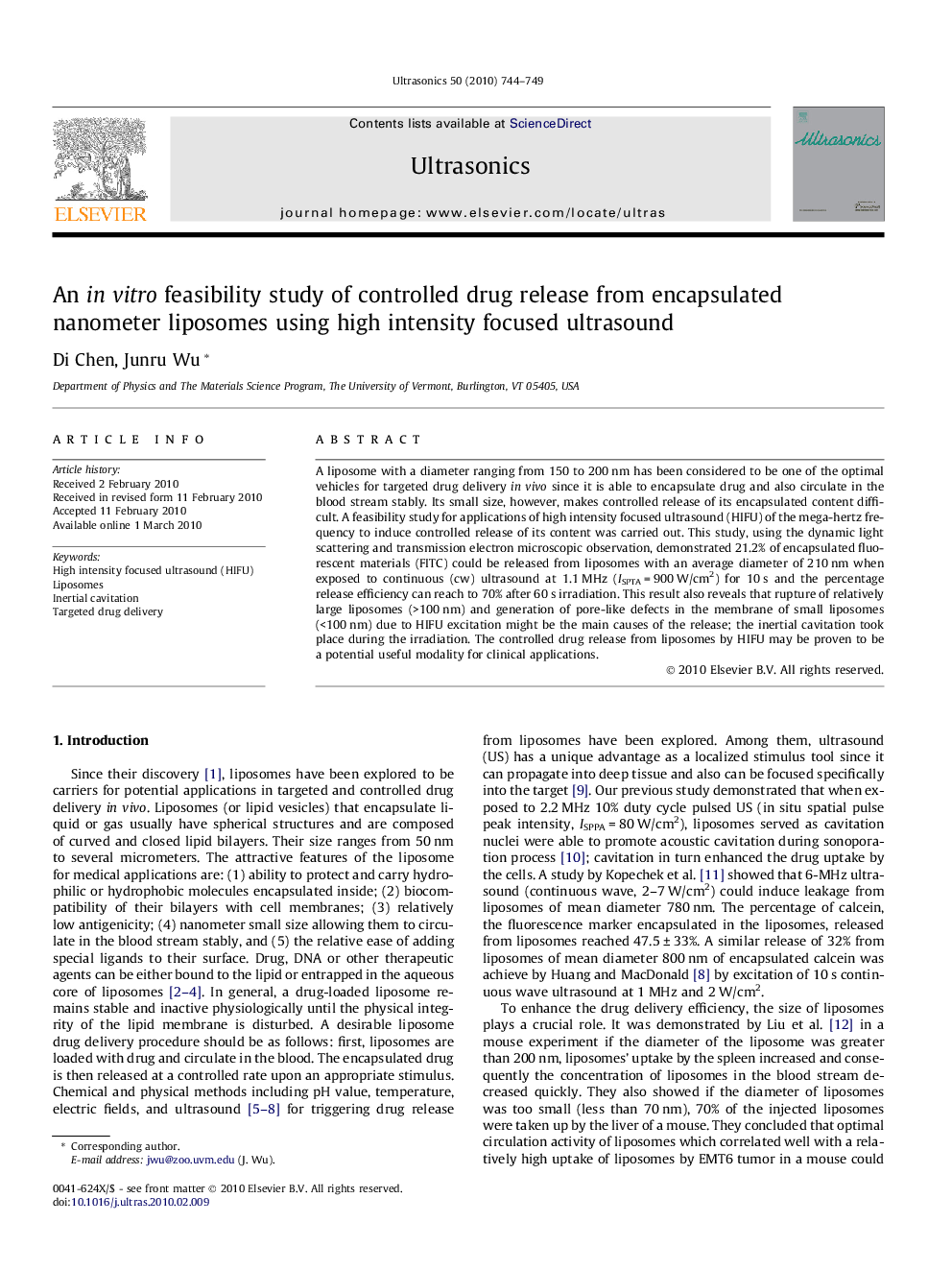| Article ID | Journal | Published Year | Pages | File Type |
|---|---|---|---|---|
| 1759542 | Ultrasonics | 2010 | 6 Pages |
A liposome with a diameter ranging from 150 to 200 nm has been considered to be one of the optimal vehicles for targeted drug delivery in vivo since it is able to encapsulate drug and also circulate in the blood stream stably. Its small size, however, makes controlled release of its encapsulated content difficult. A feasibility study for applications of high intensity focused ultrasound (HIFU) of the mega-hertz frequency to induce controlled release of its content was carried out. This study, using the dynamic light scattering and transmission electron microscopic observation, demonstrated 21.2% of encapsulated fluorescent materials (FITC) could be released from liposomes with an average diameter of 210 nm when exposed to continuous (cw) ultrasound at 1.1 MHz (ISPTA = 900 W/cm2) for 10 s and the percentage release efficiency can reach to 70% after 60 s irradiation. This result also reveals that rupture of relatively large liposomes (>100 nm) and generation of pore-like defects in the membrane of small liposomes (<100 nm) due to HIFU excitation might be the main causes of the release; the inertial cavitation took place during the irradiation. The controlled drug release from liposomes by HIFU may be proven to be a potential useful modality for clinical applications.
